How to Create a Report Template
How to Create a Report Template
Creating a report from a report template is valuable for reports you need to generate repeatedly. The first step to create a report from a report template is building the template.
Create a Report Template
Step 1: Build the Template
- To create a report template, select Create Template in the top right of the Reports screen.
- Name the report template. Template names must be unique.
- Click Begin
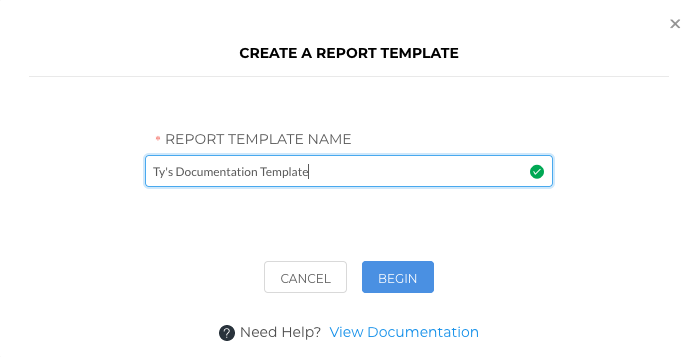
- Select the Environment(s) for which you would like to preview data as you build the template. This field will default to "All Environments." Multiple individual Environments can be selected using the pulldown or through the search icon.
Step 2: Select Data
For each Report Section, you will select the Metrics you would like to report on for ONE Inspector. Use multiple sections to create a cross-System report.
- Title the report section. Each report section contains Metrics for one Inspector. You may create up to 15 sections per report.

- Select an Inspector that contains the Metrics you would like to include in the table
- Select the Systems that should be included in the report. The Systems displayed are based on the Environments selected above. This field will default to "All Systems." Multiple individual systems can be selected using the pulldown or through the search icon.
- Select the Metric(s) that you would like to include in the report. You may select up to 15 metrics per report section.
- If desired, add an additional section(s) for the report by clicking the + Add Report Section button and repeat Step 2.
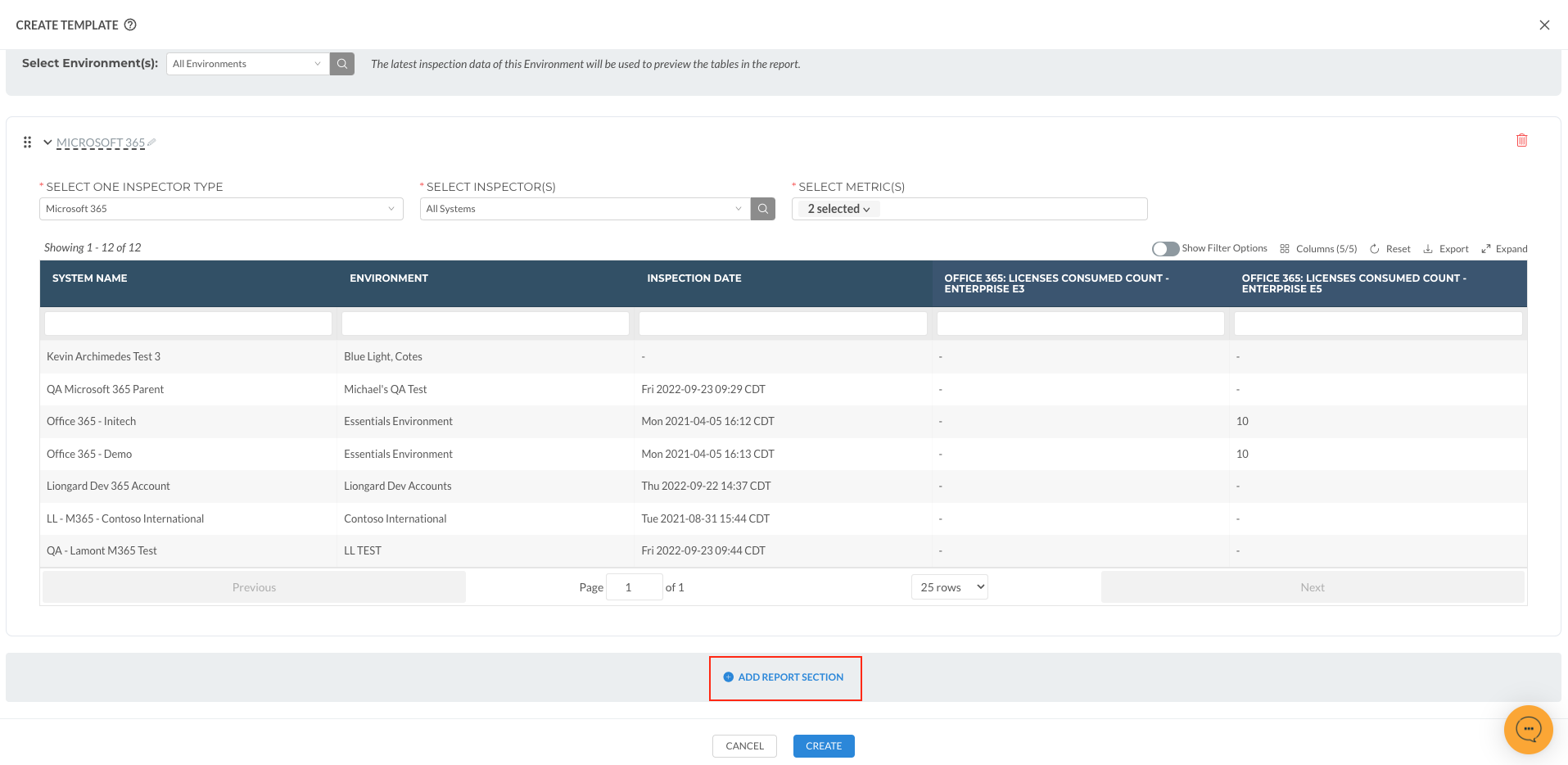
- Sections can be reordered in the report by clicking the dots to the left of the section name and dragging the section to the desired location.
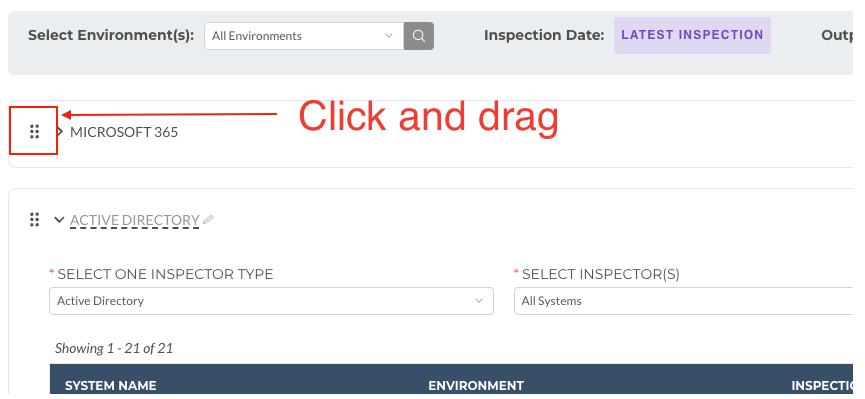
- If desired, a logo can be added to a report by clicking the Add Logo button in the top right corner of the report. Logos can be .png or .jpg formats and have a maximum allowed size of 1 MB.
- To delete a section, click the trash icon on the top right corner of the section that you would like to remove.

Step 3: Save the Template
When you are finished building the report template, click the blue "Create" button at the bottom of the screen.
Your new report template will now appear on the Templates tab.
Create a Report from a Saved Report Template
Step 1: Create the Report
- To create a report using a saved template, select Create Report in the top right of the Reports screen.
You can also select the Create Report icon on the individual template in your templates list.
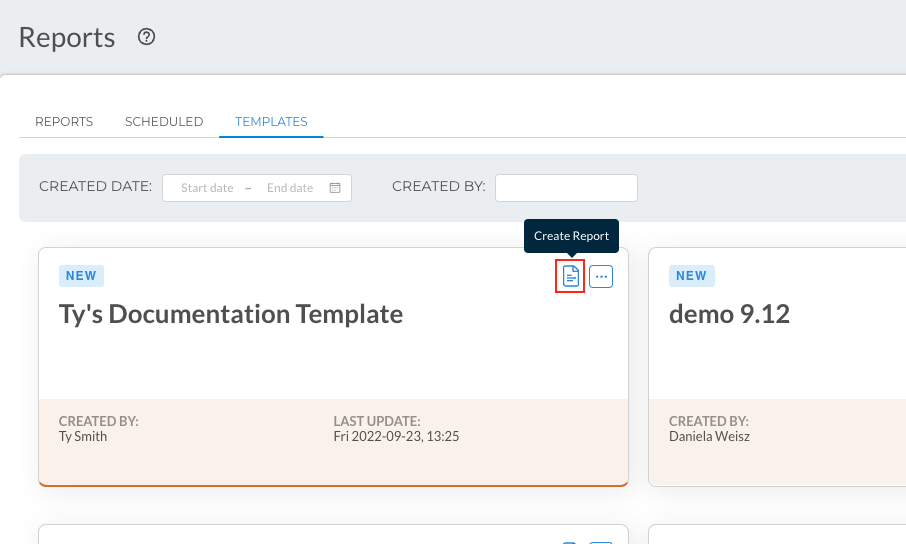
- Select From Template
- Select the appropriate Template
- Name the report. Report names must be unique.
- Select the Environment(s) for which you would like to create the report. This will default to "All Environments." Individual Environments can be selected using the pulldown or through the search icon. Multiple Environments can be selected.
- Click Generate
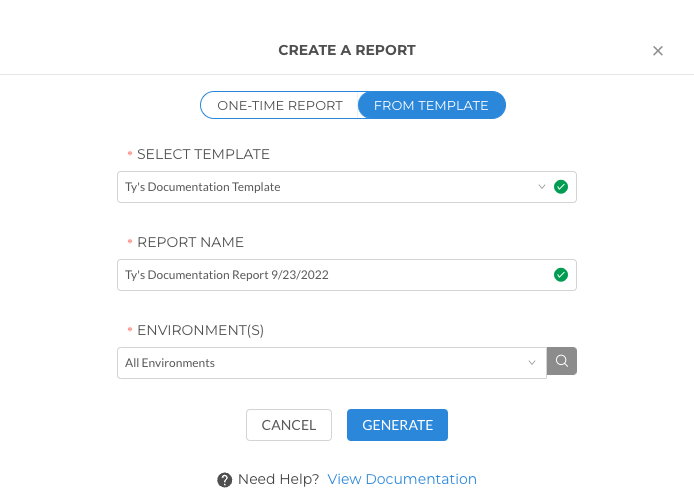
Step 2: Edit the Report
Based on the template, and your selections above, your report will generate. You can edit the report if necessary, including changing the inspection date, adding Metrics, etc.
By default, building a report from a template will pull data from the latest inspection. If you would like to change the inspection date of the report, select Change > Specific Date.
- If a specific date is selected, you can also specify a date range in the event that Metrics are not available for the date selected. If a range is selected, the report will display data from the most recent date, within the range specified, that has available Metrics. You can also elect to exclude systems with no data.
- When you are satisfied with the date, click Select.
If desired, change your Output options
- Selecting the checkbox for "All Environments in one report" will generate ONE report with ALL selected Environments
- Selecting the checkbox for "Separate reports per Environment" will generate a DIFFERENT report for EACH Environment selected in the Reports builder.
- Selecting both checkboxes will generate both a consolidated report and a report for each individual Environment.
You also may choose to filter the Metrics tables within the report to further explore the data. However, filters will not be saved in the report. You may export the Metric table itself via the "Export" option in the right-hand corner of the Metric table which will preserve the applied filters.
Step 3: Generate the Report and Add a Schedule
-
Once you are satisfied with the report, select Create at the bottom of the screen.
-
If desired, you can add a schedule the Report by clicking the add schedule button in the top right corner of the report. Complete the fields based on your desired schedule.

- Your report will generate based on the schedule selected.
- Once generated, the report will automatically appear in your Liongard instance under the Reports tab.
- Scheduled reports will be named using the original report name followed by the date the report was generated.
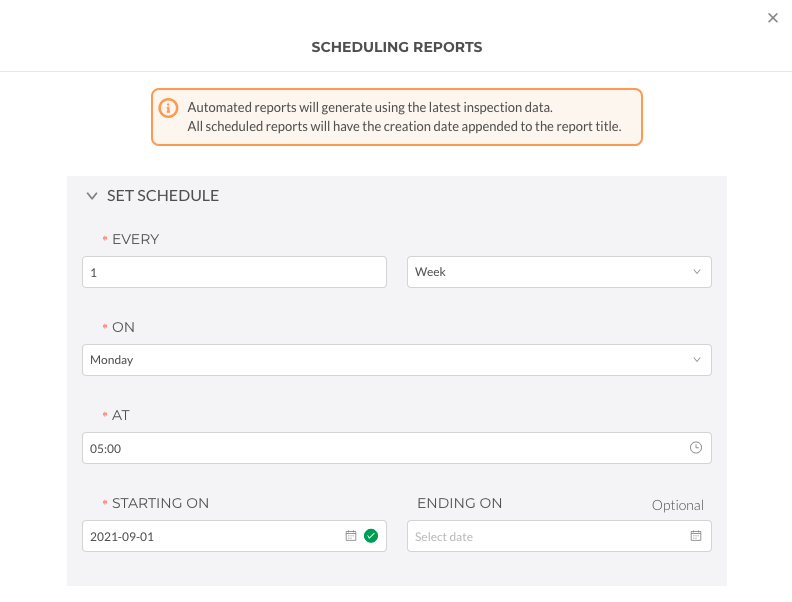
- Optional: Expand the Add Recipients panel to enter an email address(es). All entered emails will be sent a notification when the report has been generated and is ready to be viewed in Liongard. Click the Generate this report now button to run the report immediately.

- Your report can be downloaded in Excel or PDF format by clicking the download button in the top right corner of the report.

Using the Reports Download ButtonWhen a Report is downloaded as an Excel spreadsheet or PDF, any filters that you have applied to the Liongard table will not be applied to the spreadsheet. Liongard is currently working on adding this functionality to the Reports feature and this document will be updated accordingly.
- To share the report click the share button in the top right corner of the report.

- "Enter Emails" will allow you to email a link to the report. This link will allow whoever is sent the link to access the report in Liongard. You can also add a message to the body of the email.
- "Copy Link to Share" will copy a link to the report in Liongard to your clipboard.
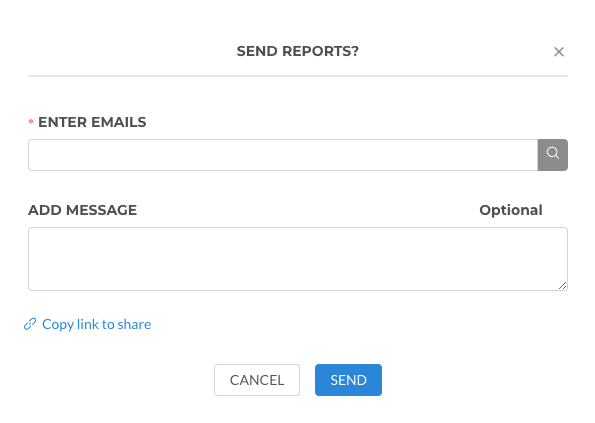
- The report can be edited or deleted using the corresponding buttons in the top right corner of the report.

- Once the report is generated, you can access the report in the Reports tab.
Updated 3 months ago
